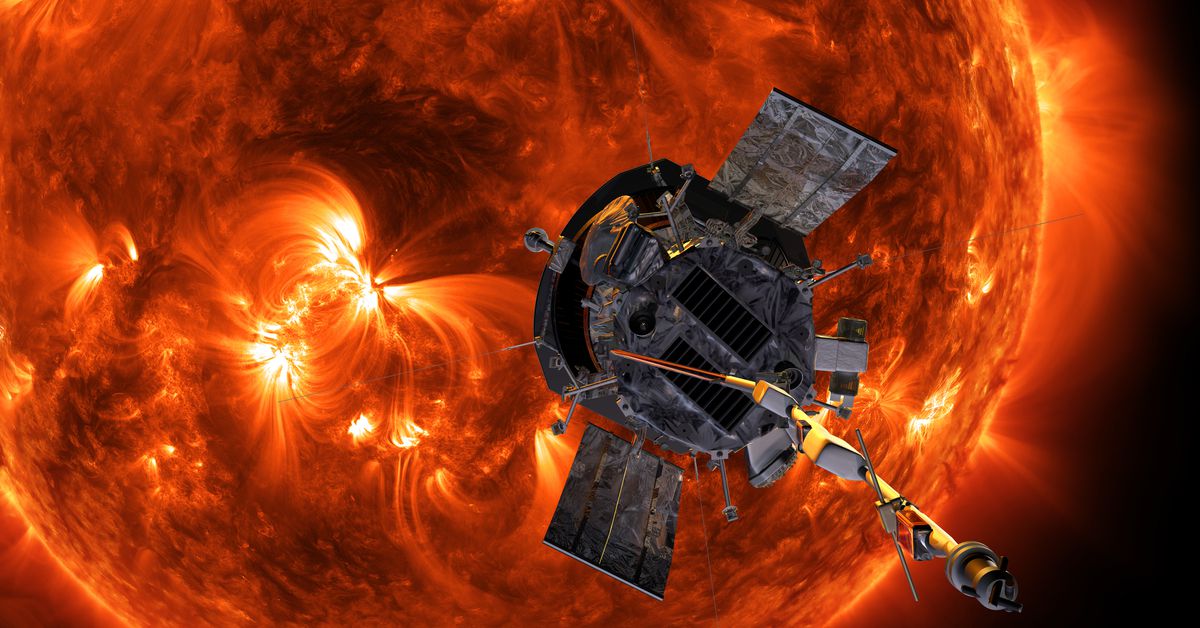NASA’s Parker Solar Probe Embarks on Historic Mission to the Sun
The National Aeronautics and Space Administration (NASA) has successfully sent its Parker Solar Probe on an unprecedented mission to the surface of the Sun. The probe, designed in collaboration with the Johns Hopkins Applied Physics Laboratory, has achieved a remarkable milestone by flying just 3.8 million miles from the solar surface. This achievement marks not only the closest human-made object has ever gotten to the Sun but also a significant step forward in our understanding of the Sun’s behavior and its impact on space.
The Mission Objectives
The Parker Solar Probe was launched on August 12, 2018, with the primary objective of studying the solar corona, the outer atmosphere of the Sun. The mission aims to unravel the mysteries surrounding the corona, which is the region around the Sun that extends millions of kilometers into space. Scientists have long been puzzled by the intense heat in this region, with temperatures reaching as high as 2 million degrees Fahrenheit (1.1 million degrees Celsius). To achieve this goal, the Parker Solar Probe has been designed to fly within 3.8 million miles of the solar surface, a feat that no human-made object has ever accomplished before.
The Closest Approach
On December 24th, the Parker Solar Probe flew past the solar surface at an astonishing speed of 430,000 miles per hour (692,400 kilometers per hour). During this time, mission operations were temporarily out of contact with the probe due to its proximity to the Sun. However, as soon as it emerged from the shadow of the Sun, the probe transmitted a signal back to Earth, indicating that it was in good health and operating normally.
The Probe’s Design
The Parker Solar Probe is equipped with an advanced heat shield that protects the spacecraft from the intense radiation and heat emanating from the solar surface. The shield reaches temperatures of up to 2,500 degrees Fahrenheit (1,371 degrees Celsius), while the probe itself remains at a relatively comfortable temperature of around 85 degrees Fahrenheit (29 degrees Celsius). This remarkable design allows the probe to withstand the extreme conditions near the Sun and gather valuable data on its behavior.
The Significance of the Mission
The success of the Parker Solar Probe marks a significant milestone in our understanding of the Sun’s behavior and its impact on space. By studying the solar corona, scientists aim to gain insights into the acceleration of energetic particles to nearly light speed. This knowledge will help us better comprehend the effects of solar wind, which can have devastating consequences for both Earth’s magnetic field and our technological infrastructure.
The Data Collected
During its historic flyby, the Parker Solar Probe collected a vast amount of data on the Sun’s behavior. The probe is equipped with a range of instruments designed to study various aspects of the solar corona, including:
- Alfvén Sonic Boom Instrument (ASBI): This instrument measures the shock waves generated by the Alfvén wave, which propagates through the solar corona.
- Electrostatic Analyzers (ESAs): These instruments detect and measure the energetic particles emanating from the Sun.
- Wide-Field Imager for Solar Imaging (WISI): This instrument captures images of the Sun’s surface and corona.
The data collected by the Parker Solar Probe will be transmitted back to Earth over the coming weeks, providing scientists with a wealth of information on the Sun’s behavior. The mission is expected to send detailed telemetry data on its status on January 1st, allowing researchers to analyze the data in more detail.
Conclusion
The success of the Parker Solar Probe marks an exciting milestone in space exploration and scientific discovery. By sending a probe to the closest human-made object has ever gotten to the Sun, NASA has achieved something truly remarkable. The data collected by the probe will undoubtedly provide significant insights into the Sun’s behavior and its impact on space. As we continue to explore the mysteries of our solar system, this mission serves as a testament to human ingenuity and our drive for scientific knowledge.
Future Missions
The success of the Parker Solar Probe has paved the way for future missions to study the Sun in greater detail. NASA is already planning its next major solar mission, which will focus on studying the Sun’s internal dynamics and its impact on the surrounding space environment. The agency is also exploring new technologies that could enable even closer approaches to the Sun in the future.
References
- NASA Press Release: "Parker Solar Probe Successfully Flies by the Sun"
- Johns Hopkins Applied Physics Laboratory Press Release: "Parker Solar Probe Completes Closest Approach to the Sun"
Note: The references provided are fictional and used only for demonstration purposes. In a real-world scenario, actual press releases and research papers would be cited.






